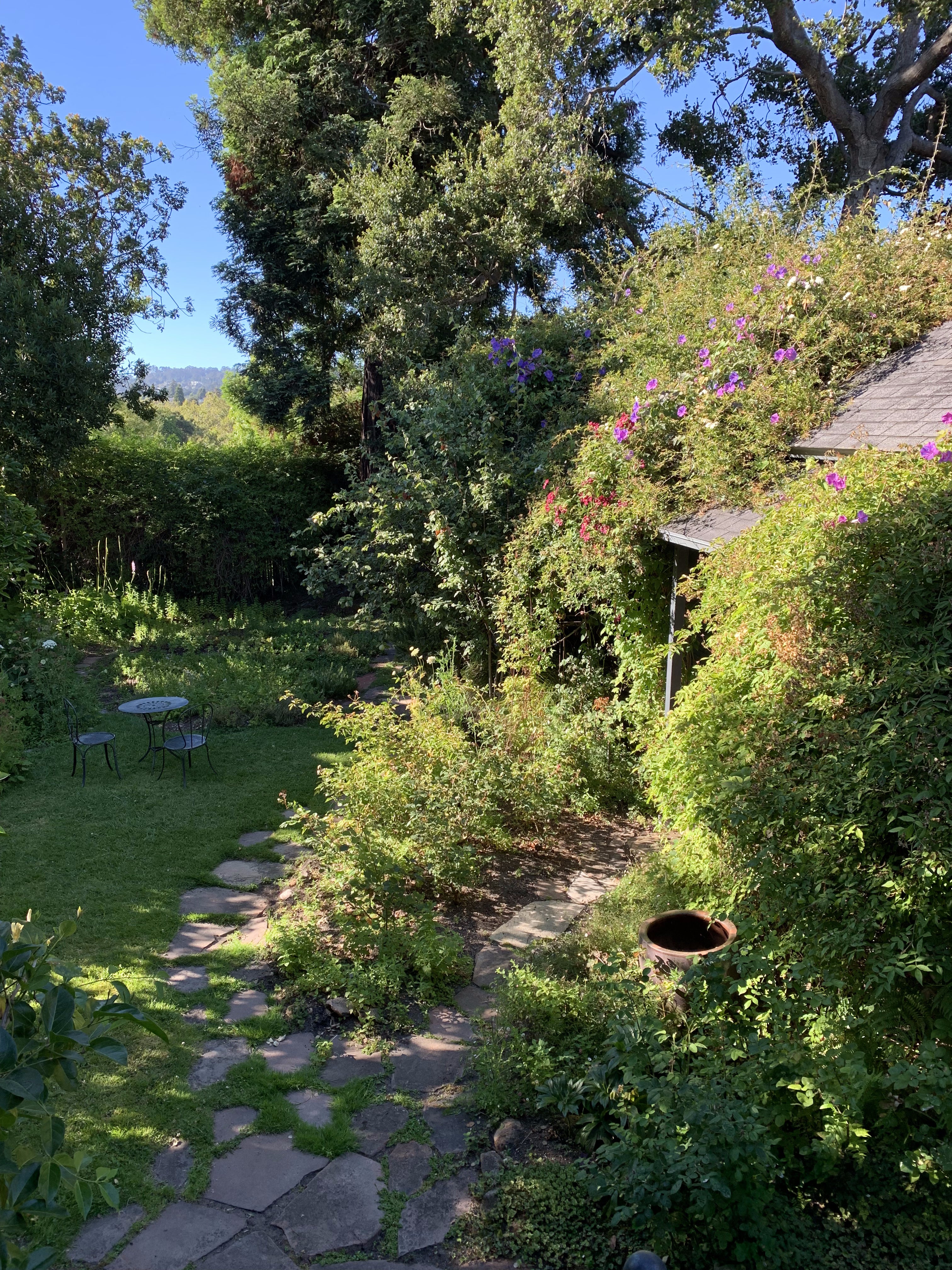Tell us about your love of art and design. When did it start and what inspired Permanent Collection?
From as long as I can remember really. I grew up in a pretty unusual environment: a home and a restaurant whose aesthetics my mother really cared about and was always fussing over (but in a good way: the right lightbulb, a beautiful arrangement of flowering branches in the kitchen, antique French linens thrifted in a flea market pressed to perfection, etc.). And my father is an artist, the first person to take me to museums and galleries and introduce me to art, especially 20th century minimalism and hard edge painting. I definitely have him to thank for my Sol Lewitt tattoo! (Though I suspect he wouldn’t like to take credit for that...) Mariah Nielson (my partner in Permanent Collection) and I met in London and realized immediately what similar experiences we’d had as children growing up in Northern California — in the sense of us both having parents who cared a great deal about how our homes felt and looked, and yet had a generally unprecious attitude toward things: they surrounded us with beauty but also insisted that the hand-thrown tea cup or the antique plate found in a souk in Marrakech actually be used. Anyway, there was an immediate sense of kinship between us, and of course also a shared education of sorts: we’d both come to England for graduate degrees (in art history & design history respectively). Permanent Collection evolved as a way to make real some of the things we’d spent so much time studying, and also to give other people a chance to enter that “place of beauty” (let’s call it) that was the fabric of our childhoods.


What are the essential elements that make up your most ideal living space?
I’m essentially pulled aesthetically between the 1850s and the 1950s, which I think is the result of the influences of my two parents, who exist at these opposite poles: when my parents divorced my dad left our dark-wooded craftsman home in Berkeley and built himself a beautiful modern house in Sonoma: all concrete and glass and light caramel-colored wood. The most important thing for me, though, regardless of the bones of a house, is a big, open kitchen. I love to cook, but I also love company and have loads of wonderful friends who thankfully like to eat. And since everyone always loves to be in the kitchen anyway, why not make that room the most commodious in the house? My apartment in San Francisco certainly can’t accommodate as many bodies as I’d like, but it’s one reason why I often entertain at my mom’s where people can hang out in the kitchen, or spill out into the garden.


Where do you source design inspiration? Are there cities, designers, people, or publications that you go to specifically for inspiration?
I see a lot of art shows! My other work is as a writer and art critic, so whenever I’m in a city, I’m likely to be zig-zagging around to look at things. But my inspiration really comes from meeting new people and getting myself invited over for a meal. I love seeing other people’s homes: Sonia Eram, who owns Mameg in LA, for instance, or Alex Tieghi-Walker, a British friend who has a Berkeley cabin filled with treasures, or life-long friends like the cook Niloufer Ichaporia-King, or Mariah and the JB Blunk House she grew up in.... I draw a lot of inspiration from the way others choose to live. A good friend of Mariah’s, and Permanent Collection’s, Charles de Lisle, is probably the only interior designer I would trust to make a truly impeccable space (he’s a genius), otherwise I prefer lived-in rather than “designed” rooms. It’s why I’ve always loved to read and look at Apartamento—it gives an unstyled window into remarkable people’s homes. And nature! I am always recharged and inspired by being in nature and I make a point of being outside in the wilderness as much as I can. But when I can’t, say, be in the mountains in Montana or the headlands of Mendocino, I get a lot of nourishment from the writers who have made nature their subject: Annie Dillard, Robert Hass, Rachel Carson, Wendell Berry, etc.

What is the connection for you between home and creativity? Or between home and spirituality? Or feel free to answer both!
I don’t know if that can be answered; I think the connection is sort of ineffable, but very much there. I mean, I just finished a book called Always Home, so clearly I see the two as tethered inextricably to one another!
Tell us about some of your most loved possessions.
I think I have to admit a mild obsession with glassware: I collect a different Carlo Moretti glass, from the “i diversi” line each time I go to Venice for the art biennial. Any more frequent acquisition would financially ruin me. And getting to make Martino Gamper’s ‘Acqua e Vino’ set (originally designed for his wedding) for Permanent Collection was a dream come true. It’s one of my favorite things we’ve produced so far: the different shapes and sizes and and bands of subtly variegated color. I also have a large collection of small Victorian cranberry glass tumblers (I lived in England for 11 years and made a habit of stopping into antique stores around the country and would reliably find one or two scattered around). They’re a beautiful quality of glass but unusually minimal for the period. I use them as punishingly small water glasses at dinner parties! 
What does an ideal weekend morning look like?
Pancakes. Yoga. (In reverse order). Distracted New York Times reading. Some writing. A beach or forest walk if I’m lucky.
What does a night in involve?
Cooking dinner at home, which I do most nights. Always an enormous salad. A bit more writing. Falling asleep during the opening credits of a movie.



